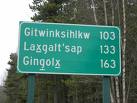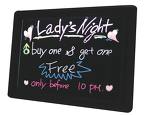
| Next | Previous | Index | Tellout Home |
33. Basic Visual Colors
Shampoo Bottles
 The primary colors are red, yellow and blue. The three secondary colors are green, orange and purple which are created by mixing two primary colors. Another six tertiary colors are created by mixing primary and secondary colors into Red-Orange, Yellow-Orange, Yellow-Green, Blue-Green, Blue-Violet and Red-Violet. These are formed by mixing a primary with a secondary color. We can learn a lot from the marketing experts concerning this subtle color message. Perhaps you have young children in your household. What color are their playthings? Take a look at their toy box. You soon realize that all the basic visual colors, bright reds, golden yellows, and blues are there. Fisher-Price and other quality manufacturers know that kids are drawn to primary colors.✞
The primary colors are red, yellow and blue. The three secondary colors are green, orange and purple which are created by mixing two primary colors. Another six tertiary colors are created by mixing primary and secondary colors into Red-Orange, Yellow-Orange, Yellow-Green, Blue-Green, Blue-Violet and Red-Violet. These are formed by mixing a primary with a secondary color. We can learn a lot from the marketing experts concerning this subtle color message. Perhaps you have young children in your household. What color are their playthings? Take a look at their toy box. You soon realize that all the basic visual colors, bright reds, golden yellows, and blues are there. Fisher-Price and other quality manufacturers know that kids are drawn to primary colors.✞
Tints and Shades
 Now, walk into the bathroom and examine the packaging of shampoos, creams and after-shave lotions intended for adults. Behold, there are no basic visual colors in sight! Instead, we have pastel pinks, and powder blues for women, pale oranges and grays alongside dark shades of olive green and purple for men. The marketing people have learned the other message regarding basic visual colors that adults are attracted to subtle tints and shades, not the bright reds, yellows, and blues the children love! See also the symbolism of colors for their subtle meaning.✞
Now, walk into the bathroom and examine the packaging of shampoos, creams and after-shave lotions intended for adults. Behold, there are no basic visual colors in sight! Instead, we have pastel pinks, and powder blues for women, pale oranges and grays alongside dark shades of olive green and purple for men. The marketing people have learned the other message regarding basic visual colors that adults are attracted to subtle tints and shades, not the bright reds, yellows, and blues the children love! See also the symbolism of colors for their subtle meaning.✞
Chalkboard Colors
 Yellow and other chalkboard colors on a green background can attract, engage and impress an audience better than traditional white chalk on a blackboard.One of the most interesting developments in color application is with a conventional chalkboard. For years and years, chalkboards were always black and the chalk was always white. So much so, that they came to be known as "blackboards" until someone had the bright idea of using different colors instead of the black and white which are both neutral colors anyway.✞
Yellow and other chalkboard colors on a green background can attract, engage and impress an audience better than traditional white chalk on a blackboard.One of the most interesting developments in color application is with a conventional chalkboard. For years and years, chalkboards were always black and the chalk was always white. So much so, that they came to be known as "blackboards" until someone had the bright idea of using different colors instead of the black and white which are both neutral colors anyway.✞
Soothing Eyes
 What would make them more attractive? Red is attractive but is also identified with anger, as in "seeing red," or danger as in "stop signs", and financial loss as in "being in the red!" Blue is cold and depressing as in "the blues", so that is no good either. Red is at one end of the spectrum and blue at the other, so the one they settled on was a "comfortable green" in the middle of the color range as the board color. Strangely enough, they found that green relaxed and soothed the eyes, so they started making highway signs that color too! The warmth and comforting pastoral hues signal encouragement to go on like the green traffic light.✞
What would make them more attractive? Red is attractive but is also identified with anger, as in "seeing red," or danger as in "stop signs", and financial loss as in "being in the red!" Blue is cold and depressing as in "the blues", so that is no good either. Red is at one end of the spectrum and blue at the other, so the one they settled on was a "comfortable green" in the middle of the color range as the board color. Strangely enough, they found that green relaxed and soothed the eyes, so they started making highway signs that color too! The warmth and comforting pastoral hues signal encouragement to go on like the green traffic light.✞
Response to Colors
 The effect of different colors is fascinating. One particular company who marketed a speed-reading course for engineers experimented with the color of their invoices. The same form was printed in different paper colors and sent out for payment. The results were surprising. The green ones were returned signed, sealed and with a check attached much quicker and in far greater numbers than the others. Yellow gained the most attention, blue ones were largely unsigned with no deposit, and the pink ones were virtually ignored!✞
The effect of different colors is fascinating. One particular company who marketed a speed-reading course for engineers experimented with the color of their invoices. The same form was printed in different paper colors and sent out for payment. The results were surprising. The green ones were returned signed, sealed and with a check attached much quicker and in far greater numbers than the others. Yellow gained the most attention, blue ones were largely unsigned with no deposit, and the pink ones were virtually ignored!✞
Yellow on Green
 What color should the chalk be? Yellow is an exciting color. Scientists tell us that it stimulates the "fovea" or "fovea centralis" of the eye, particularly when contrasted with the pleasant hues of a green chalkboard. "The fovea is the center of the "macula." This tiny area is responsible for our sharpest vision." Yellow chalk, therefore, turned out to be the perfect partner for our green chalkboards.✞
What color should the chalk be? Yellow is an exciting color. Scientists tell us that it stimulates the "fovea" or "fovea centralis" of the eye, particularly when contrasted with the pleasant hues of a green chalkboard. "The fovea is the center of the "macula." This tiny area is responsible for our sharpest vision." Yellow chalk, therefore, turned out to be the perfect partner for our green chalkboards.✞
Ornate Drawings
 Chalkboard work using colored chalks on a green or black background can produce beautiful and ornate drawings.Chalkboard or blackboard is used widely as a teaching medium in the classroom in schools everywhere. In mission work or evangelism, it is especially useful for children's quizzes and rub-out memory verses during children's mission activities. With adults, the chalkboard is also handy for recording comments in group sessions or in listing major "bullet" points in presentations. It is, therefore, a good investment for any organization to buy or better still make several boards, some fixed on walls and others portable. Many small groups working around a table might prefer a table stand for their chalkboard visuals.✞
Chalkboard work using colored chalks on a green or black background can produce beautiful and ornate drawings.Chalkboard or blackboard is used widely as a teaching medium in the classroom in schools everywhere. In mission work or evangelism, it is especially useful for children's quizzes and rub-out memory verses during children's mission activities. With adults, the chalkboard is also handy for recording comments in group sessions or in listing major "bullet" points in presentations. It is, therefore, a good investment for any organization to buy or better still make several boards, some fixed on walls and others portable. Many small groups working around a table might prefer a table stand for their chalkboard visuals.✞
Dust-Free Chalks
 Yellow and white chalks and other colors too are available in a dust-free type. Chalkboard paint in green can be purchased from most large paint stores for homemade boards, and don't forget to round off the corners of the board like a TV screen. Finally, felt erasers that clean up the chalk are available for producing a clean board after use. An interesting variation on the chalkboard is a type of pastel work currently popular with some open-air workers. They draw beautifully ornate drawings in a myriad of colors and intricate designs on open pavements and can also be used to bring the Gospel message alive.✞
Yellow and white chalks and other colors too are available in a dust-free type. Chalkboard paint in green can be purchased from most large paint stores for homemade boards, and don't forget to round off the corners of the board like a TV screen. Finally, felt erasers that clean up the chalk are available for producing a clean board after use. An interesting variation on the chalkboard is a type of pastel work currently popular with some open-air workers. They draw beautifully ornate drawings in a myriad of colors and intricate designs on open pavements and can also be used to bring the Gospel message alive.✞
Dedication to Teaching
 I will always recall a much loved and quietly eccentric history master at my grammar school in Birkenhead, Cheshire. Mr. William Williamson was deeply in love with his subject which happened to be history. Though he had been retired and brought back several times, he still took great pains and enthusiasm during the morning and afternoon breaks when his colleagues were drinking their cups of tea and coffee to spend his time instead sketching out an ornate scene on the class chalkboard in a multiplicity of colors.✞
I will always recall a much loved and quietly eccentric history master at my grammar school in Birkenhead, Cheshire. Mr. William Williamson was deeply in love with his subject which happened to be history. Though he had been retired and brought back several times, he still took great pains and enthusiasm during the morning and afternoon breaks when his colleagues were drinking their cups of tea and coffee to spend his time instead sketching out an ornate scene on the class chalkboard in a multiplicity of colors.✞
Commitment
 Mr. Williamson's "Battle of Waterloo" was breathtakingly action-packed, his "Charge of the Light Brigade" electrifying! Yet all he used was a large blackboard, some colored chalks and a lot of loving care. The greatly loved Mr. Williamson, had a passionate concern to share the love of his life, which was his history with the boys who were his students. Christians have much to learn about dedication from the likes of him!✞
Mr. Williamson's "Battle of Waterloo" was breathtakingly action-packed, his "Charge of the Light Brigade" electrifying! Yet all he used was a large blackboard, some colored chalks and a lot of loving care. The greatly loved Mr. Williamson, had a passionate concern to share the love of his life, which was his history with the boys who were his students. Christians have much to learn about dedication from the likes of him!✞
"Basic Visual Colors"
by Ron Meacock © 1982-2021
| ^Top Page | Next | Previous |